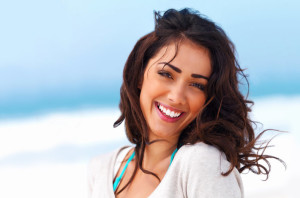 Portrait photography, also known as photographic portraiture, is a genre of photography that focuses primarily on capturing distinct features of a person’s face and its expression for the purposes of portraying the personality, mood and emotions of that person.
Portrait photography, also known as photographic portraiture, is a genre of photography that focuses primarily on capturing distinct features of a person’s face and its expression for the purposes of portraying the personality, mood and emotions of that person.
The portrait photo is a composed image of an individual in a still position rather than a snapshot. People have made portraits since the invention of the camera. There are nine widely recognized styles of portrait photography which include: the traditional or classical portrait (the subject looks directly at the camera and the face is predominant in the photo), candid portrait (shot without the subject expecting the photographer), environmental portrait (the subject is photographed in his/her natural environment) as well as much more creative or constructionist styles such as lifestyle portrait, surreal portrait, abstract portrait, glamour portrait and conceptual portrait.
Portrait Photography Equipment
Wide aperture, fast telephoto lenses are typically preferred by professional portrait photographers, because these promote shallow depth of field and isolate subjects from the background, thus allowing better focus on the subject. While wide-angle lenses ( focal length of 26 mm) capture more of the background, which means that a suitable location is required, medium telephoto lenses ( 85 mm) include much less of the background, which means that almost any mundane location can be chosen.
The suggested equipment for environmental portraiture includes a high-performance DSLR, low ISO setting, prime instead of zoom lenses (for the wide apertures), and also a tripod. Zoom lenses are typically used in candid portraiture.
Portrait Photography Tips
When portrait photos are taken in a photo studio, the photographer benefits from two key elements – controlled background and controlled lighting. The background can be controlled with the aid of portable backdrops or fast telephoto lenses. Lighting can be controlled with portable flash kits that consist of light stands and diffusion equipment such as umbrellas. Alternatively, you can simply position your subject next to a large window and place a white reflecting card on the other side of the subject face.
Window light portraits also require the use of a tripod, due to slower shutter speeds. Slow shutter speeds create impressionistic effects when the subject and the background are in motion. Most portrait photographers capture the face of the subject in sharp focus and other elements in soft focus. Glamour portrait and other creative styles on the other hand place an accent on soft focus for more artistic effects.
If you do not have a studio, then it is best to concentrate on shooting environmental portraits and try to enlarge the final image. Wide angle lenses are typically used in environmental portraits, because large, detailed backgrounds are characteristic of this type of photograph.
